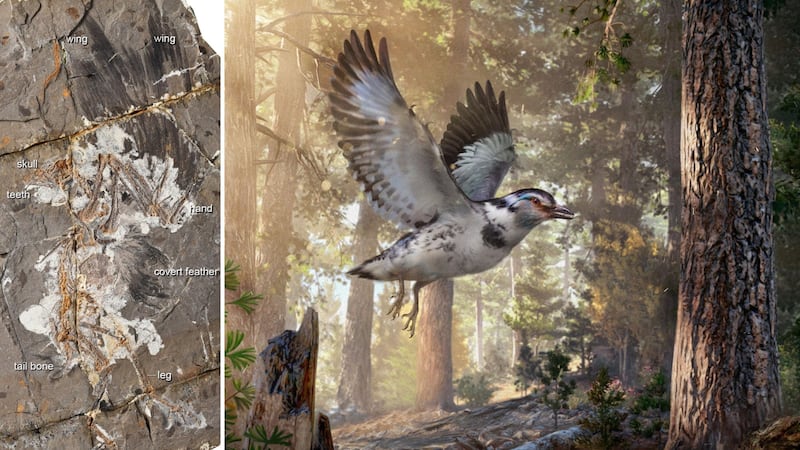A “missing link” from the dinosaur era has shed new light on the evolution of birds.
The 127 million-year-old extinct bird had short, wide wings, and a combination of bird-like and dinosaur-like traits.
A whole fossil skeleton, with feathers, of the creature named Jinguofortis perplexus was discovered in north-east China.
Analysis showed that it represented a “pivotal point” in the evolution of flight after birds lost their long bony tail, but before they evolved a fan of tail feathers.
Jinguofortis, derived from the Chinese word “jinguo” meaning female warrior and the Latin word “fortis” meaning brave, had a jaw with small teeth similar to those of its dinosaur relatives.
It also had a short bony tail and an unusual shoulder girdle made up of fused bones.
In modern birds, the shoulder which experiences high stress during flight consists of a tight joint between unfused bones.
Gizzard stones found with the fossil showed that Jinguofortis mostly ate plants.
Scientists believe the bird lived in dense forest and may have had a flying style different from that of its modern cousins.
Writing in the journal Proceedings Of the National Academy Of Sciences, the team led by Dr Wang Min, from the Chinese Academy of Sciences, said: “The discovery of Jinguofortis further highlights the importance of plasticity of development for mosaic evolution as a driver of the diversification of early birds.”








